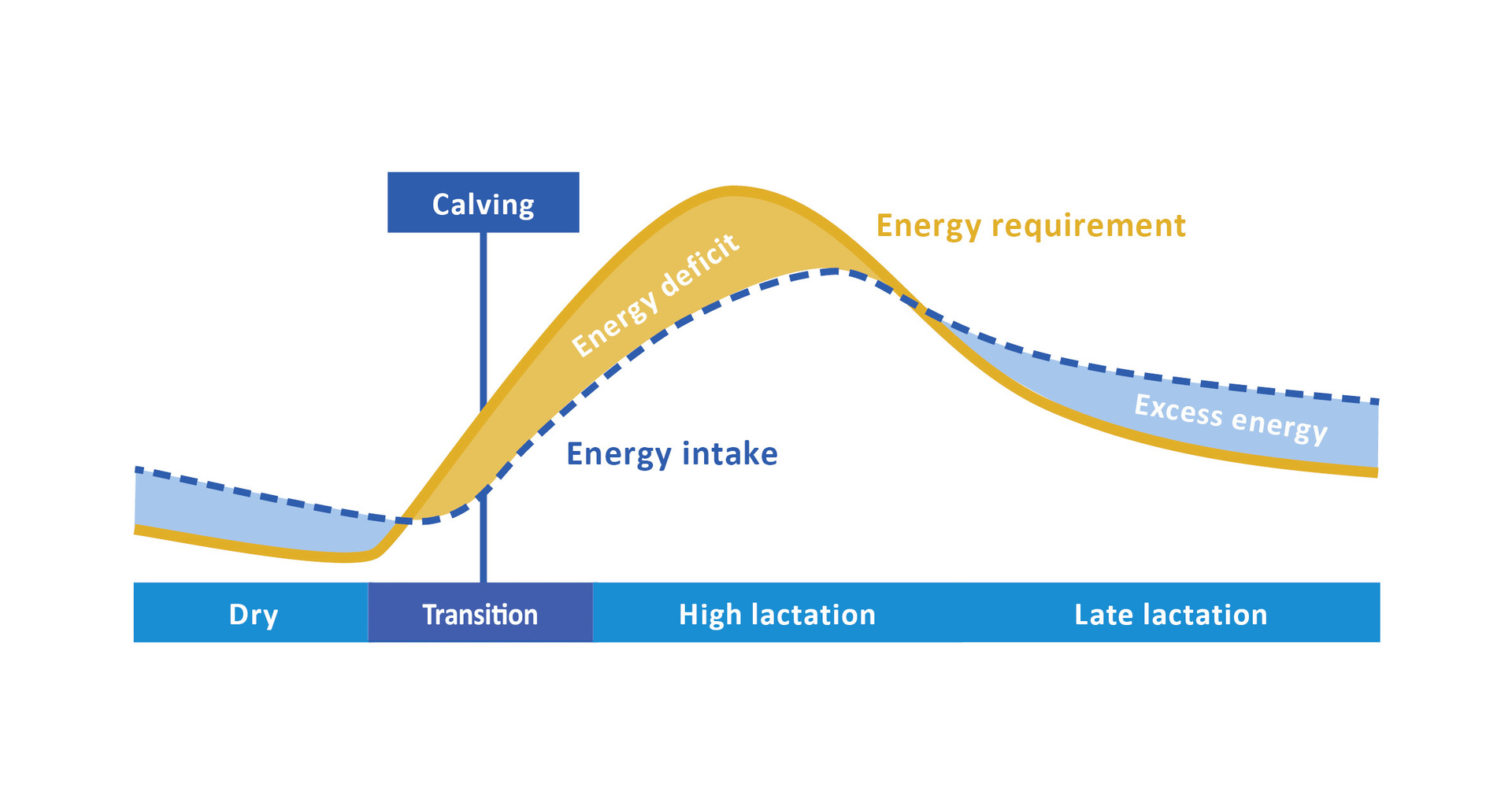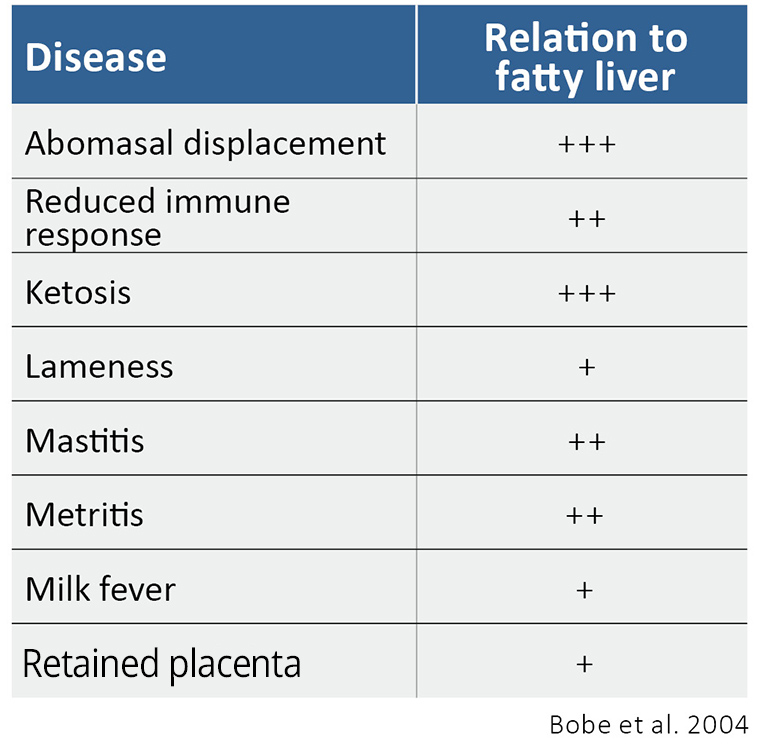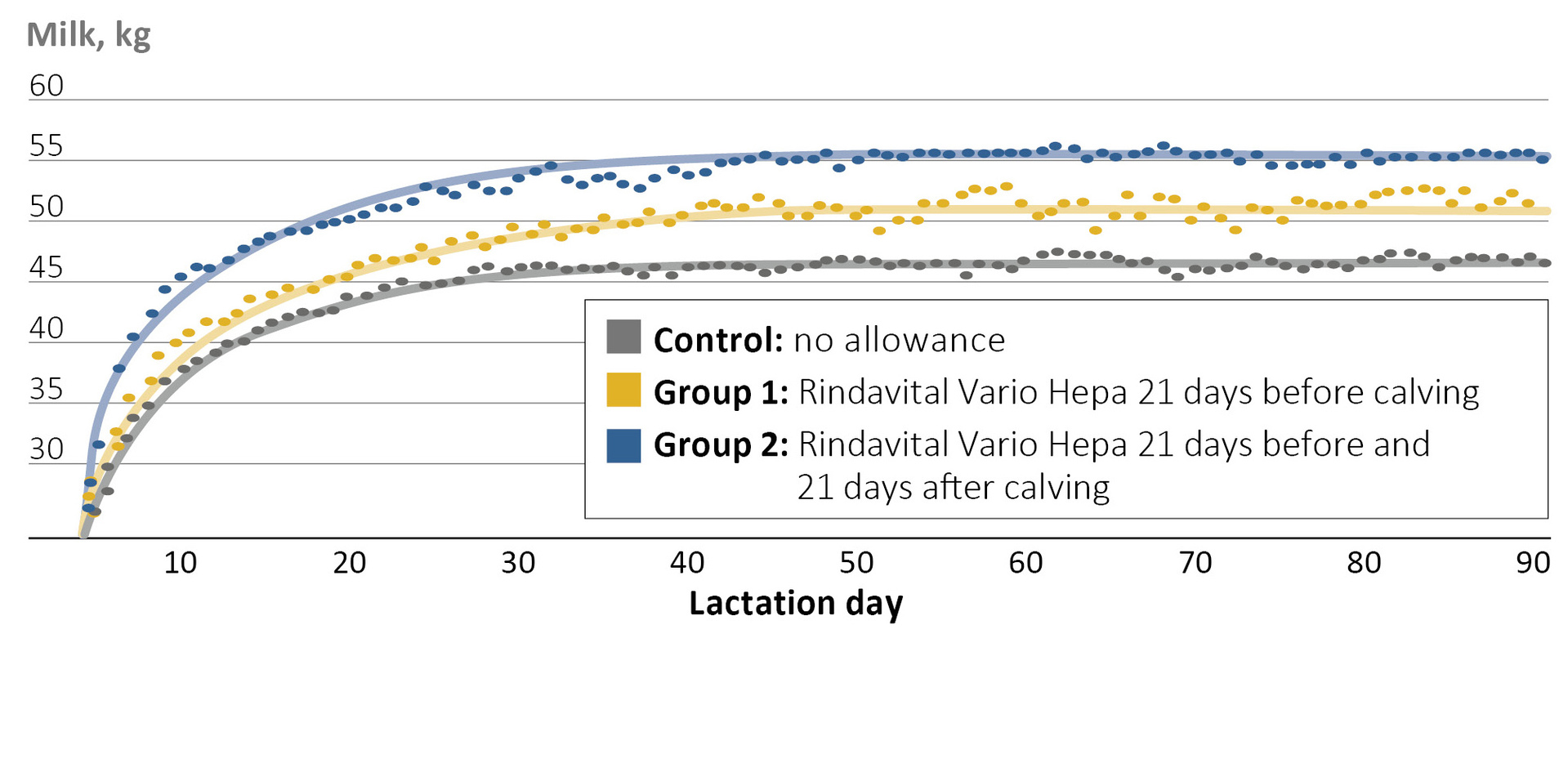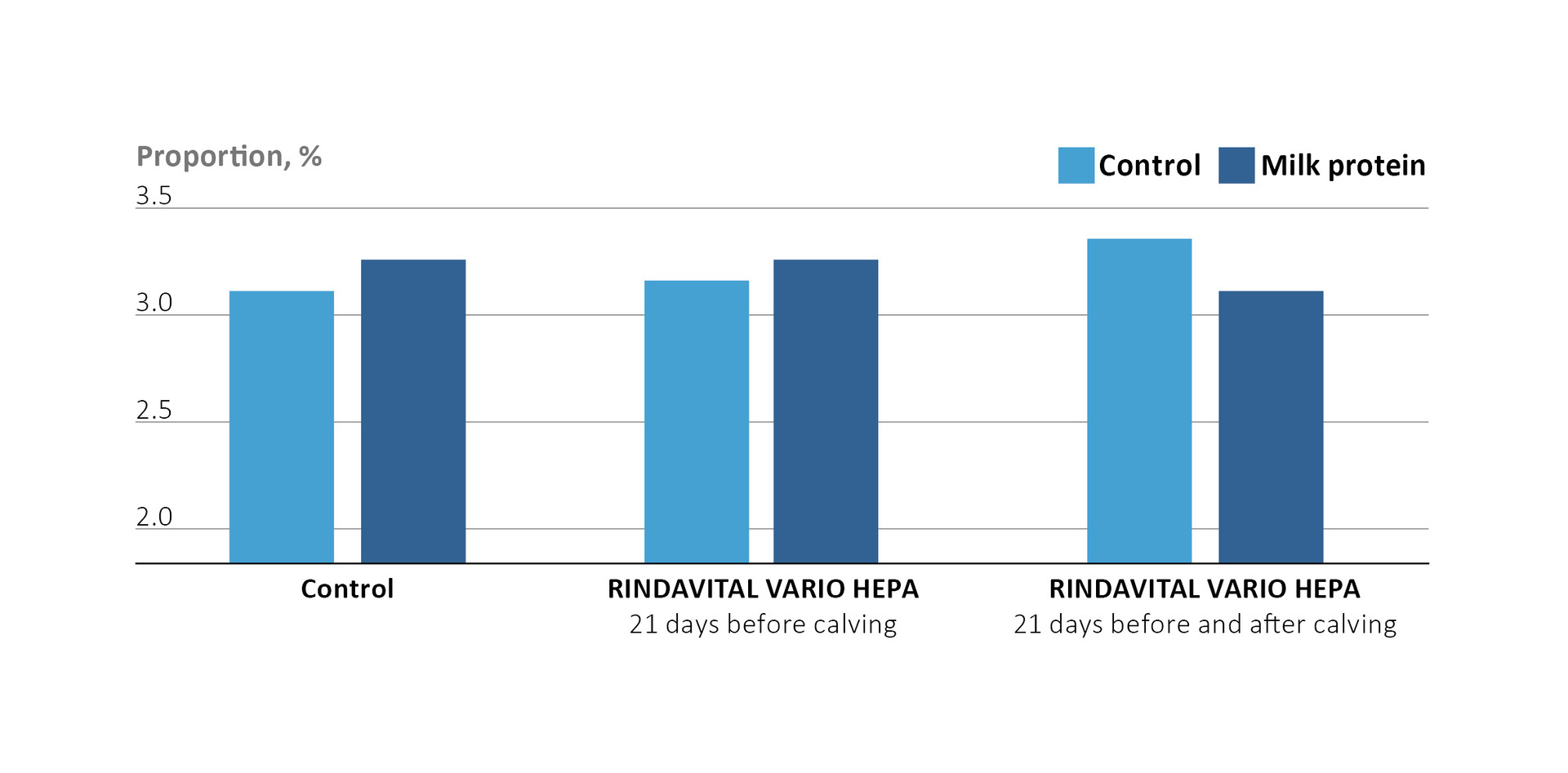
RINDAVITAL VARIO HEPA in the transition phase
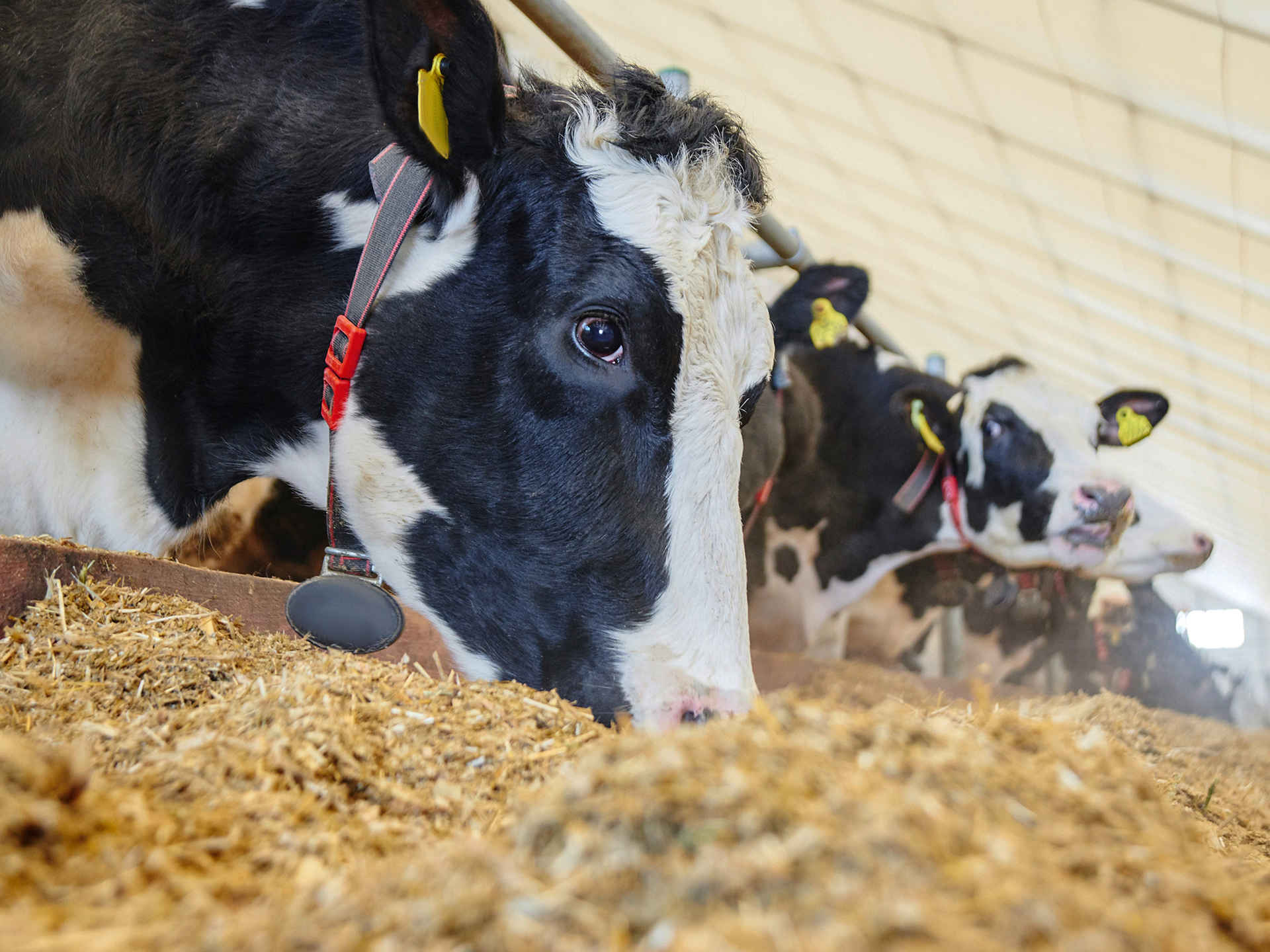
A stable metabolism and a healthy liver form the basis for long-lived, fit, high performance dairy cows. The start of lactation in particular continues to pose a major challenge for feed and management. Fatty liver and ketosis can now be actively counteracted thanks to new RINDAVITAL VARIO HEPA.
The main cause of metabolic disorders is the biologically-induced negative energy balance at the start of lactation (see Fig. 1). Feed intake in the days immediately following calving is insufficient to meet both the energy and protein requirements of the cow.
The cow then mobilises body mass in order to compensate for this lack, causing high levels of fatty acids to enter the liver. There, they are used for energy or transported on in the form of VLDL (very low density lipids) and then used for processes such as milk fat synthesis.
Easing the strain on the liver
However, the capacity of this transport mechanism via VLDL is limited. In this way, the fat accumulates in the liver in the case of significant body fat loss, resulting in ketosis, fatty liver syndrome and numerous secondary diseases, at the end of which the cows often die (see Fig. 2). Supporting the elimination of fatty acids from the liver is therefore a key mechanism for preventing fatty liver disease and ketosis during the transit phase and in the first weeks of lactation.
RINDAVITAL VARIO HEPA
This is exactly where the newly-developed RINDAVITAL VARIO HEPA comes in. It contains high amounts of rumen-protected choline chloride. Choline chloride is an elementary component of VLDL, meaning it supports the elimination of fatty acids from the liver. This prevents fatty liver, the cows are more energetic and secondary diseases occur much less frequently. Because the energy from body fat can be used more efficiently, milk yield also increases at the start of lactation.
Deployment at Gut Hülsenberg
The effect of RINDAVITAL VARIO HEPA was thoroughly investigated in the test application at Gut Hülsenberg. For this purpose, cows due to calve were divided into three groups, each of 21 animals:
- Control: no allowance
- Group 1: Supplement of RINDAVITAL VARIO HEPA, 21 days before calving
- Group 2: Supplement of RINDAVITAL VARIO HEPA, 21 days before and 21 days after calving
The results show a significantly positive effect on the milk performance of cows in the first 100 days thanks to alleviation of energy metabolism (see Fig. 3). Especially group 2, which received the RINDAVITAL VARIO HEPA supplement both before and after calving, also showed a positive development in milk fat content (see Fig 4).
Flexible use
Choline chloride can be used either as part of RINDAVITAL VK ONE CC, a mineral feed for dry cows, at 200 g/day or flexibly via the top dressing RINDAVITAL VARIO HEPA at 100 g/day. This means all ration concepts can be easily and individually equipped with the addition of choline chloride.
